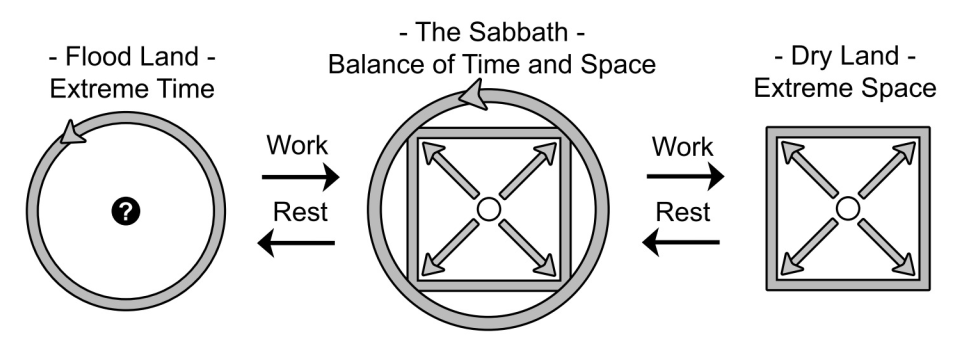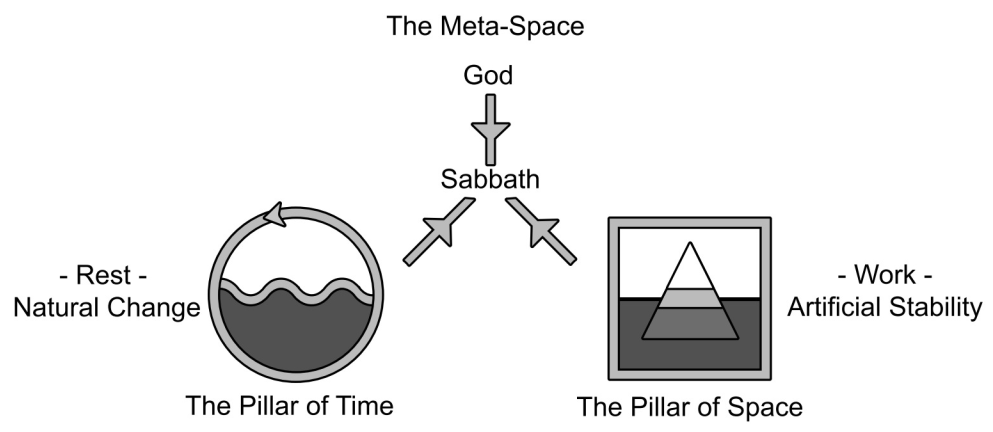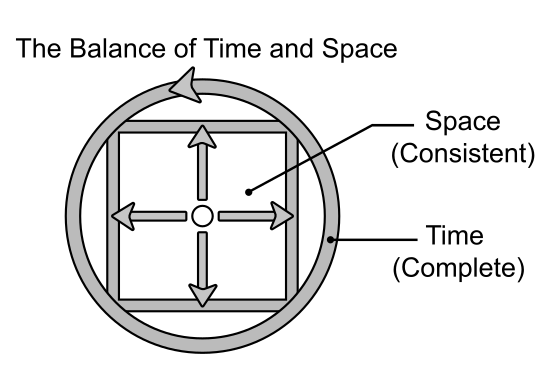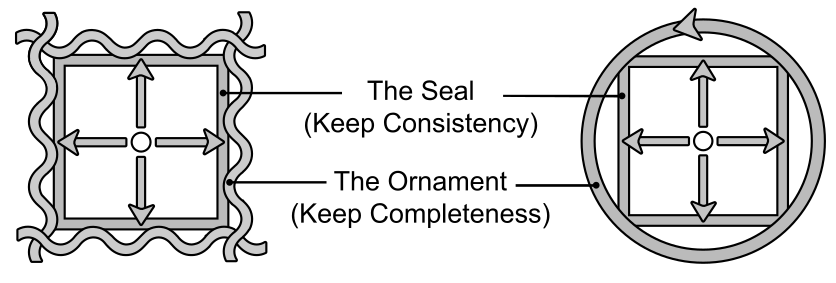Sabbath
In six days God made heaven and earth, and the sea with everything in it, and he rested on the seventh day… (v11)
The Sabbath and Jubilee are examples of cyclical influences on different scales of reality. The Jubilee is a large-scale version of the sabbatical year, which is itself a large-scale version of the weekly Sabbath. These reiterated patterns are just another example of microcosms (wheels within wheels) in biblical cosmology.
Returning to Primitive Conditions (from Deut-15 and Lev-25)
For six years you shall sow your field, prune your vineyard, and gather its produce. But the seventh year shall be a Sabbath of solemn rest for the land… At the end of seven years, you shall make a release. Creditors shall release their debtors and servants shall be let loose… You shall count seven sabbatical years (7 x 7 = 49 years), then you shall make a proclamation by blowing the horn throughout all your land for the fiftieth year, and you shall proclaim liberty throughout the land. It shall be a Jubilee unto you, and you shall return every man to his tribal possession. The land shall not permanently be sold because it is mine. You are but strangers and sojourners with me.
The Sabbath: As Balance of Time and Space
In biblical cosmology, the Sabbath is not just a period of rest and renewal, but a cosmic covenant between ‘space’ and ‘time.’ This covenant may also be interpreted as a deal between the ‘land’ and the ‘sea’ to not overextend onto the other’s domain. This sacred peace is what allows space and time to coexist instead of destroying each other in a constant tug of war. Without it, countless worlds would have to be flooded and then rebuilt in endless succession.
As illustrated above, the sabbatical rest does not completely return the land to its primitive state. Instead, celebrating the Sabbath requires the ability to balance the natural flow of cyclical time with the artificial stability of space. It makes natural rest and renewal possible without losing all the advantages of work.
Beyond its defensive function, the Sabbath also plays a critical role for divine knowledge in creation. As illustrated below, the ultimate purpose of the Sabbath is to elevate spatial reality by the creation of a “meta-space.”
As the creator of both ‘heaven’ and ‘earth,’ God cannot be known through regular knowledge, but only by the transcendence of regular knowledge. For similar reasons, the creator of both ‘time’ and ‘space’ cannot be hosted by regular space, but only by the transcendence of regular space.
In general, the purpose of the sabbatical rest is the renewal of space. However, in the context of divine knowledge, this renewal also elevates regular space into a higher and more inclusive version of space. This sacred space can host the singular principle of time and space, cyclical and straight, foreign and familiar, irrational and rational, hidden and revealed, etc.
The Sabbath: As Seal and Ornament
The Sabbath is not just a period of rest and renewal, but the time in which God “completed his work.” At the human scale, this “final touch” is often symbolized by seals and ornaments.
To understand this symbolism, it is important to remember that the Sabbath is essentially a peace agreement between ‘space’ and ‘time.’ This covenant guards against the extreme powers of absurdity, confusion, and pointless change, and the extreme powers of reason, purity, and productive stability. As a seal, it keeps the floodwaters from leaking back into space. As an ornament, it prevents reason from forcefully integrating all that is pointless, fluid, or strange.
The Sabbath: At various scales of reality
Like all symbols in biblical cosmology, these concepts may be discovered at different scales of reality. For instance, the Sabbath is a peace agreement between the land and the sea on the cosmic scale, and between civilization and wilderness on a more human scale. The latter is often symbolized by a wall that protects from the wilderness on the inside but is covered with vines on the outside. In accordance with these patterns, ancient traditional crafts such as carpentry and masonry always included ornamentation as a “final touch” to any construction. These usually consisted of loops and twists which often resembled wild vines reminiscent of flowing waters. Thus, at different scales of reality, ornamentation symbolizes the preservation of primitive nature at the margins of artificial space. Adding this “final touch of vanity” to complete any created work is a way to acknowledge the limits of reason and stability.
Footnotes
-
Pageau, Matthieu (May 29, 2018). The Language of Creation: Cosmic Symbolism in Genesis: A Commentary (“LoC”). ch 48 ↩
-
LoC. ch 49 ↩
-
LoC, ch 51 ↩



